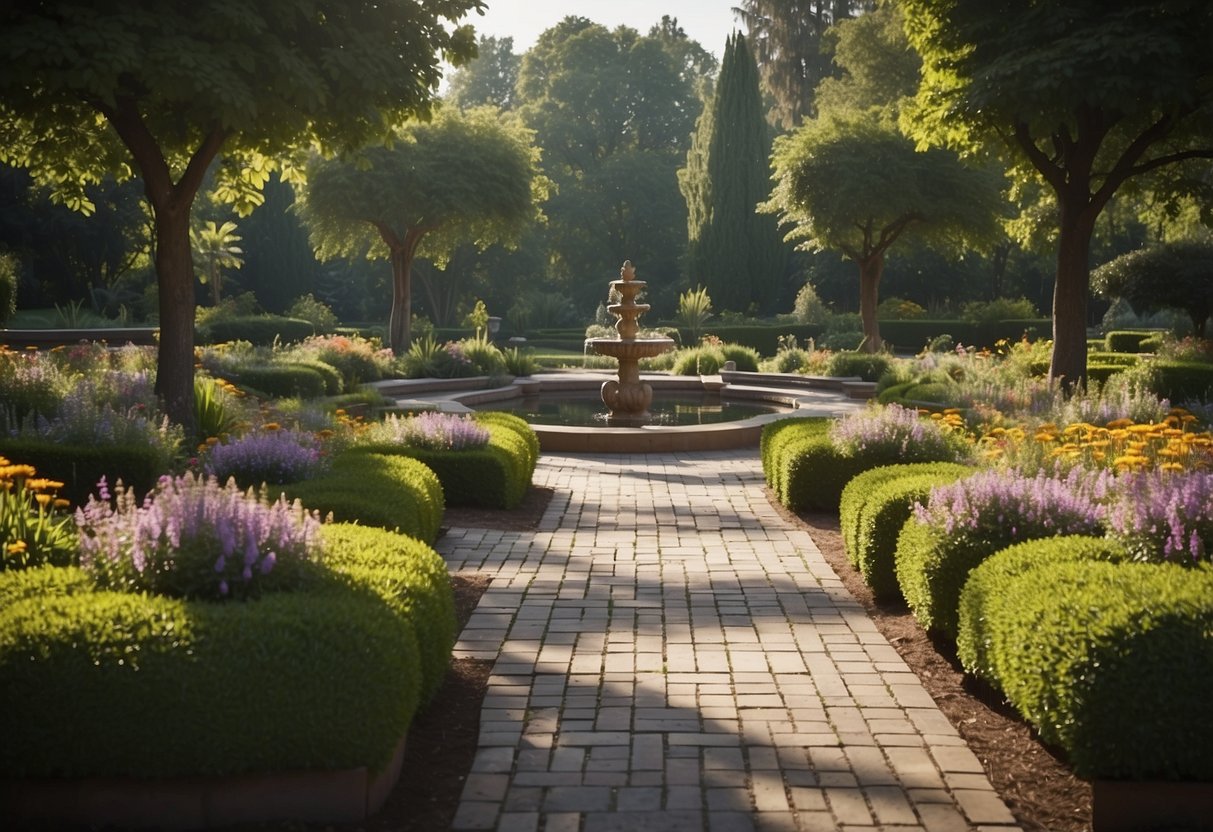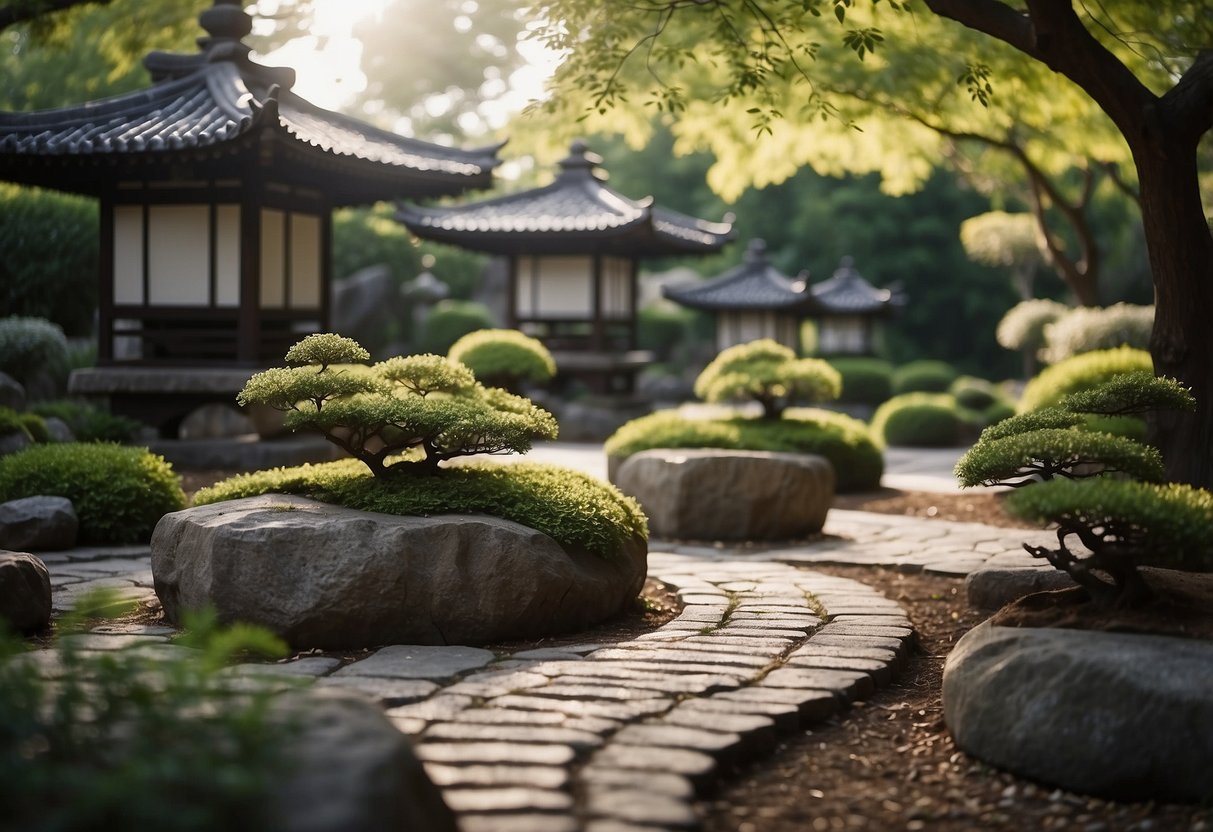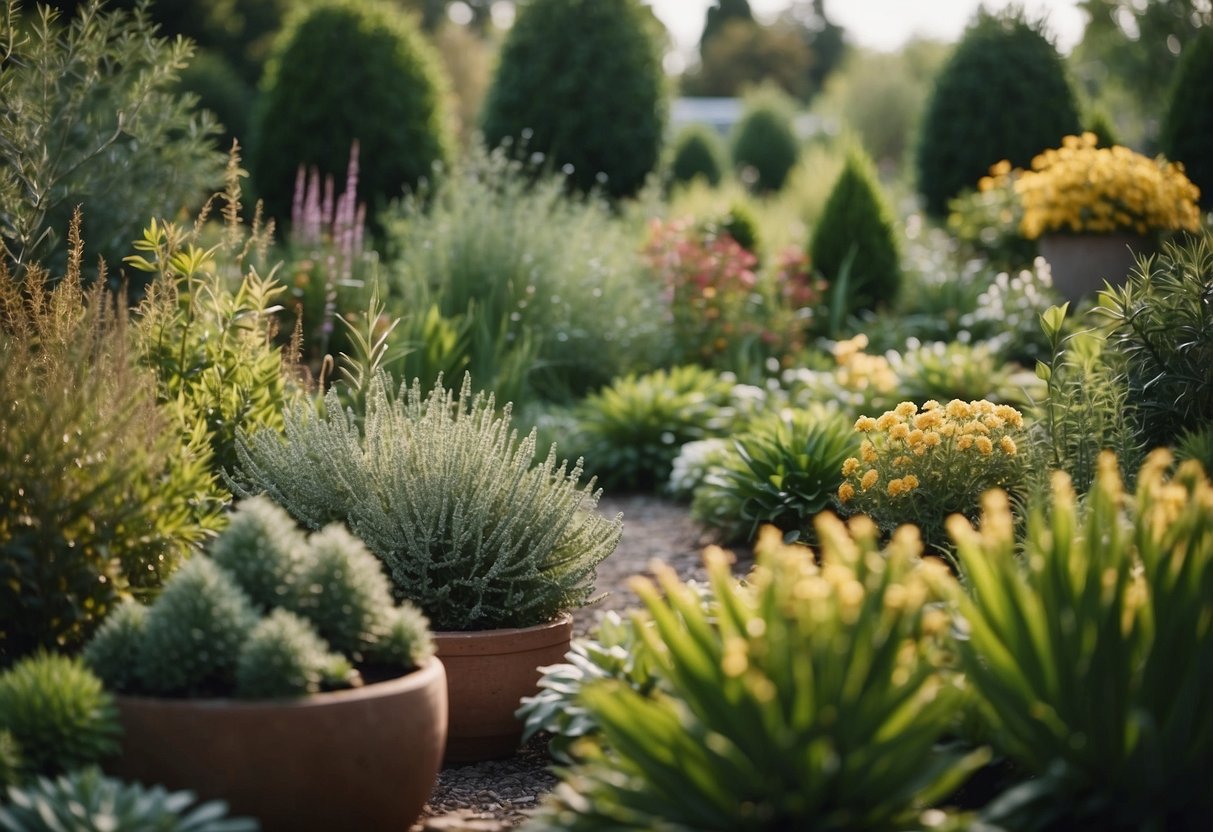Large Garden Layout Ideas: Transform Your Outdoor Space Today
Creating a large garden layout can be both an exciting and rewarding endeavor. Whether you’re starting from scratch or looking to enhance an existing garden, there are countless ways to get creative with your design. From vegetable patches to flower beds, a well-thought-out plan can transform your outdoor space into a beautiful and functional area.

Wondering how to make the most of your large garden? With the right ideas and a bit of planning, you can design a garden that caters to your needs, whether you want a serene retreat, a place to grow your own food, or a vibrant space for entertaining. Dive into these layout ideas to get inspired and start planning your perfect garden.
1) Herb Spiral Garden

An herb spiral garden is a fun and practical way to grow herbs in your garden. It uses a spiral design to maximize space and create different growing conditions in one spot.
This type of garden is taller in the middle and gradually spirals down to ground level. You can use materials like stones or wood to build it.
A standard herb spiral is about 6 feet wide and 3-4 feet tall in the center. This size lets you reach all the plants easily. Plus, it looks great in any garden, adding a unique, natural touch.
For more details on building one, check out How to Build a Spiral Herb Garden.
2) Raised Bed Vegetable Garden

Raised bed vegetable gardens are great for maximizing space and improving soil quality. You can easily manage the soil mixture and drainage.
A typical size for a raised bed is 4×8 feet. This size is big enough to grow a variety of plants while still being easy to reach from all sides.
Consider placing taller plants like tomatoes and beans on the north side of the bed. This way, they won’t shade shorter plants like lettuce and onions.
Group plants with similar water and sunlight needs together. This makes it easier to care for them.
3) Butterfly Habitat Garden

A Butterfly Habitat Garden is a great way to bring color and life to your yard. Start by choosing plants that attract butterflies, like milkweed, coneflowers, and lavender.
Make sure the garden is in a sunny area since butterflies love to bask in the sun to stay warm. Group plants in drifts of 3-5 to create large swaths of color that butterflies can easily spot (Garden Design).
Add a few rocks or pieces of pavement to absorb heat, giving butterflies a place to warm up in the morning. You’ll enjoy watching the butterflies visit your garden, and they’ll appreciate the inviting space you’ve created!
4) Cottage-Style Flower Garden

A cottage-style flower garden brings charm and lush greenery to your space. It’s all about mixing flowers, herbs, and even vegetables for a casual, vibrant look.
Add height and dimension with an arbor, which provides vertical space for plants to climb. Flowers like clematis and petunias can add color and texture.
Create cozy seating areas with benches or chairs. Position them under shady trees or beside fragrant blooms to fully enjoy your beautiful garden. For inspiration, you can explore more cottage garden ideas.
5) Fruit Tree Orchard

Creating a fruit tree orchard in your garden can be a rewarding experience. Start by planning the layout of your trees. Consider the space each tree will need to grow and thrive.
Ensure your orchard has access to proper irrigation. Trees need at least a gallon of water a week to stay healthy. Installing a French Drain can help manage water levels.
Use stakes to support young saplings. Plant them in well-drained soil and secure them to prevent wind damage. A stable, healthy tree will increase your orchard’s productivity.
Consider using permeable pavers to maintain a mud-free environment. This helps with drainage and keeps your orchard clean and sustainable.
6) Zen Meditation Garden

A Zen meditation garden is a peaceful retreat in your backyard. Start by choosing a quiet corner away from noisy areas.
Include a simple water feature, like a gently babbling brook, to create soothing sounds. Surround it with pebbles for a calming effect.
Add a few floating decks as meditation platforms. Plant tall grasses around them for a soft, serene look.
7) Water Feature Garden

A water feature garden can change the whole atmosphere of your outdoor space. The sound of running water brings peace and tranquility to your garden.
You can add a small pond with koi fish or a simple fountain. Another idea is to use a narrow pool of water, which adds a bold, modern touch with a sleek style.
Consider adding plants like evergreens and hostas around your water feature. These plants will complement the garden’s look and help create a relaxing, symmetrical scene. Find more ideas and inspiration for your water feature garden online.
8) Tropical Garden Escape

Transform your garden into a tropical paradise. Start with plants that have large, dramatic leaves like canna and banana trees. Add some vibrant flowers such as hibiscus and bird of paradise for color.
Include soothing water features like ponds or waterfalls. These not only look beautiful but also bring a sense of peace.
Don’t forget the whimsical elements like garden art, seashells, or decorative rock to complete the tropical feel.
9) Play Area for Kids

Creating a dedicated play area for kids in your garden can be a great way to keep them entertained. You can set up a mini bell tent for a cozy spot to play or read. This tent can transform into a fairytale castle or a space station with a bit of imagination.
Another idea is to include a wipe clean art board. This gives kids a space to draw and paint without worrying about messes inside the house. Building a mud kitchen can also be a fun and messy activity that will keep them engaged.
10) Outdoor Dining Space

Creating an outdoor dining space in your garden can transform your outdoor area into a cozy spot for family meals and gatherings. Start by choosing a spot with some shade or add a pergola for protection.
Use comfortable seating and a sturdy table to make dining enjoyable. Adding elements like string lights or a pendant light can create a warm atmosphere in the evenings. For more ideas, you can check out these outdoor dining spaces.
Design Principles for Large Garden Layouts

When designing a large garden, it’s essential to strike a balance between beauty and practicality. By organizing your space into distinct zones, you can create a functional and appealing garden that meets all your needs.
Balancing Aesthetics and Functionality
A large garden can be both beautiful and useful. First, consider the visual appeal. Think about incorporating paths and curved lines to create a natural flow. Adding a variety of plants with different colors and textures can enhance this effect.
Functionality is equally important. Plan areas for growing vegetables, relaxing, or entertaining guests. Use garden tools like benches, trellises, and raised beds to define spaces. This makes your garden not only pretty but also practical.
Paths and walkways should connect different zones. These help you access all parts of your garden easily and create a coherent layout. Adding features like a pond or a seating area can serve as focal points.
Utilizing Zones for Different Activities
Creating zones in your garden helps organize your space for various activities. Veggie gardens are perfect for growing your own food. Use sample layouts like 10×10 sections to manage planting areas efficiently.
Relaxation zones can include a seating area with comfortable furniture. Wildlife habitats like a wildlife pond attract birds and insects, adding life and movement to your garden.
Including a separate play area for kids ensures that your garden remains a place for the entire family to enjoy. Keep these zones connected with pathways, ensuring easy access and a tidy layout. Adjust these zones as your needs change to keep your garden functional and enjoyable.
Incorporating Water Features

Adding water features to your garden can create a relaxing atmosphere and become a focal point of your yard. This section covers different types of water features and provides tips on keeping them in good condition.
Types of Water Features
Fountains
Fountains come in many sizes, from small bubblers to large multi-tier structures. They provide soothing water sounds and can be placed in various garden areas, including patios and paths.
Ponds
Gardens can benefit from raised ponds or ground-level ones. They can be home to fish and water plants. Raised ponds also can draw attention to specific garden sections.
Waterfalls and Streams
These features add movement to your garden. A waterfall can flow into a pond, creating calming sounds. Likewise, a stream can wind through your plants, making the area feel more natural.
Maintenance Tips for Water Features
Regular Cleaning
Debris like leaves and dirt can accumulate in water features. Cleaning them routinely prevents clogging and ensures clear water. For ponds, skimming the surface with a net can help.
Water Quality
Check water pH and clarity often. Algae can turn your water green and harm fish. Using a UV filter helps manage algae growth and keeps water clear.
Winter Care
In colder climates, drain water from features that can’t handle freezing. Store pumps and other equipment indoors. This prevents damage and ensures your features are ready to go when it warms up again.
Pump Maintenance
Pumps need regular inspection to function correctly. Clean out any blockages and check that the pump is running smoothly. This keeps water circulating and prevents stagnation.
By selecting the right types of water features and maintaining them well, you can enhance the beauty and tranquility of your garden.
Maximizing Plant Diversity

When planning a large garden, maximizing plant diversity can create a more resilient and vibrant space. Focus on choosing plants that thrive in your climate and use a mix of colors and textures to make your garden visually appealing and healthy.
Choosing the Right Plants for Your Climate
Selecting plants that suit your local climate is essential. Research what grows well in your region. For hot climates, choose drought-resistant plants like succulents and cacti. Cooler climates benefit from hardier plants like kale and pansies. You can use resources like this guide to find the best varieties.
Create a list of plants suited to your area’s temperature, rainfall, and soil type. This ensures your garden thrives without excessive intervention. Native plants are often the best choice because they are adapted to local conditions and support local wildlife.
Combining Colors and Textures
A diverse garden is also visually interesting. Mix plants with different colors and textures to create a beautiful and dynamic space. For instance, pair tall, spiky plants like lavender with low, bushy ones like marigolds.
Use contrasting colors to highlight different areas. The combination of blue and yellow flowers is striking, while green foliage can be a soothing backdrop. Textures are important too; mix smooth leaves with fuzzy or spiky ones.
Check out these large garden ideas for inspiration on how to combine colors and textures effectively. This approach not only enhances beauty but also supports a variety of wildlife, contributing to a healthy ecosystem.







